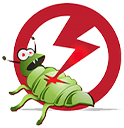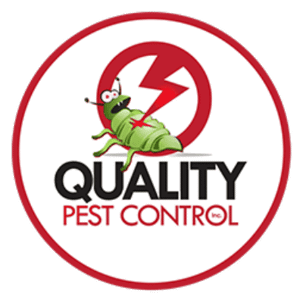For most homeowners, a few terms almost immediately bring about terror. Things like mold, tornadoes, water damage, and the homeowners association can all send chills down a homeowner’s spine. However, despite those entities, occurrences, and natural disasters, nothing scares a homeowner more than the word “termites.”
The most prevalent type of termite in the Omaha, Nebraska, region is subterranean termites. They build their nests in the ground and travel daily to find food. Termites are constantly active and work nonstop to feed their colony. However, you'll usually only notice them in the spring. Large swarms of winged reproductive termites arise from their underground nests in the spring after being roused by rain and warm temperatures. The swarmers descend to the ground after emerging, molting their wings, and searching for a mate.
A homeowner is typically made aware of a nearby termite colony by either observing a termite swarm or discovering a significant number of their shed wings. Although small, when these pests work collaboratively, they severely damage wooden structures.
If you've ever wondered why homeowners are so afraid of termites, it's because they pose the greatest threat to our homes' structural integrity and financial resources. Damages from them total more than $5 billion annually across the nation. Termites can easily work for months or years before being found because they silently enter and exit our homes and eat undetected structural wood.
You usually discover termites after they have already caused significant damage to a structure, making repairing termite damage an expensive endeavor because most homeowners' insurance doesn't cover this damage. It's crucial to have your neighborhood Omaha pest control handy knowing this.
The safety of your family is our top priority at Quality Pest Control. To rid your home of subterranean termites, we employ the Sentricon® System. This system is secure for your family and pets and effective at stopping and getting rid of active termites. Similar to your home, we have years of experience removing termites. Call us immediately to learn more about how we can defend your house against these wood-eating pests.
How To Identify Termites And Their Damage
Subterranean termites come in three types, or castes, with different physical characteristics; reproductives, workers, and soldiers. The king, queen, and alates are reproductives. The queen is the largest termite and is crucial to the development of a colony; the king is considerably smaller.
Alates, also called swarmers, are characterized by their long, dark brown to almost black bodies and transparent, slightly milky-colored wings. Their wings may have barely perceptible hairs, and their bodies typically range from 1/4 to 1/2 inches in length. Workers and soldiers lack wings, unlike swarmers.
Workers have bodies that are cream in color and are roughly 1/4 of an inch or smaller. The distinctive feature of soldiers is their jaw. They have large mandibles, which enable them to chew through wood and move objects. Their bodies are flat and wide, and their heads are rectangular. Unlike workers, their bodies are typically creamy white, but their heads are darker and more brownish.
It's always a good idea for homeowners to be aware of the telltale signs of termite damage. Since termites only eat wood, there is a chance that they will seriously harm your house, necessitating costly repairs or even rendering it uninhabitable. Here are a few signs of their presence and the damages they can inflict on your Omaha home:
- Termite swarms: Termite swarms, frequently the first indication of infestation, are visible when termites search for a new colony. Swarms of termites can appear inside or outside a house. They often congregate near windows and sliding glass doors.
- Drywall: Termites may harm the drywall in your home right under your nose because they can hide inside walls and floors. If you notice any signs, whether major ones like holes and cavities or minor ones like bubbling or peeling paint, it might be best to look into them.
- Discarded wings: Another indication of a termite infestation in your Omaha home is the presence of tiny, discarded wings on dry wood and underground swarmers. You'll likely notice clumps of discarded wings close to closed doors and windows because termites leave their nest to start a new colony.
- Mud tubes: Mud tubes made of soil, wood, and termite saliva indicate subterranean termites' presence. These tubes help subterranean termites defend themselves against predators and prevent dehydration. They also serve the termite colony's various needs with various tubes, including exploratory, working, swarm, and drop tubes.
- Structural: If most of your home consists of wood construction, termites will likely invade. However, termite damage is not just a problem for wood homes because they can get inside through plaster, metal siding, and other materials. Whatever kinds of termites you have, they could cause structural damage to your house and the surrounding area.
If you suspect that unwelcome termites are invading your home, contact a reputable termite control company to begin treatment and get the issue under control as soon as possible. Quality Pest Control will design a customized treatment plan for your home to eliminate such invasive pests.
Why And How Termites Infest And Destroy Homes
Termites eat wood and wood products, which leads to home destruction. They can digest cellulose because of unique enzymes, bacteria, and protozoa in their gut. The biggest subterranean termite colonies can consume up to one pound of wood daily. However, this damage frequently goes unnoticed for a long time. Termite damage frequently has a significant impact on the structural integrity of your home because they slowly eat away at the wood inside, often without your knowledge.
Termite colonies can develop fully in three to five years, and while it is impossible to determine an infestation's exact age, it is possible to make accurate predictions about it. Depending on the colony's size, termite damage may not manifest for three to eight years.
Termites and the damage they inflict on homes are nothing to delay or put off for any reason. Call Quality Pest Control to protect your Omaha family and home from destructive termites.
Factors That Attract Termites To Homes And How To Remove The
Any food source that contains cellulose draws termites, but wood, in particular, is their preferred meal. On the other hand, certain species of termite favor damp, softwood and choose to live in the soil close to the foundation of your house. Therefore, it is a good idea to ensure that your home has no issues with persistent moisture or standing water in areas near your home's foundation, like the basement or crawl spaces. Other factors draw termites to your home, such as:
- Mulch: Mulch is an excellent resource for gardening, but because it is small pieces of dry, dead wood, it can become a buffet for termites. In addition, many people let their mulch come into direct contact with the foundations of their houses rather than installing a barrier between them. If termites get into your mulch while it is touching your home's foundation, they will have an easier time finding cracks and crevices to dig through your foundation and exterior walls so they can begin infesting your home.
- Tree stumps: Termites find tree stumps to be an ideal place to start an infestation on your property. Termites feed on the cellulose in the wood. If you let termites infest tree stumps and other dead wood on your property, it may only be a matter of time before they find their way into your house. Termites feed on the cellulose found in dead wood.
- Outdoor wood piles: Most people who gather wood for fires in their homes prefer to store their stacks of wood close to their homes and in a protected area. Termites love to infest wood stacks, which could be a potential factor leading to termites entering your home. While this is often convenient and keeps firewood safe from the elements, termites love to infest wood stacks. It is in your best interest to keep piles of wood away from the primary walls of your home and raise them so that termites won't be able to get to them.
- Problems with the roof: Termites may gain access to your home through low-hanging branches that come into contact with the roof. Termites might also find this area appealing if your gutters are clogged and have trouble draining due to their condition. Termites can have little trouble breaking through a roof and infesting the rest of a house if they start their work from one of these locations.
Schedule your consultation with Quality Pest Control today for superior service and peace of mind.
The Benefits Of Year-Round Professional Termite Control
No two termite problems are alike, and Quality Pest Control customizes its year-round termite control program to the specific needs of your home. The result is a pest-free living space. With us, termites won't have a chance to destroy your home. Call to get your services started.


